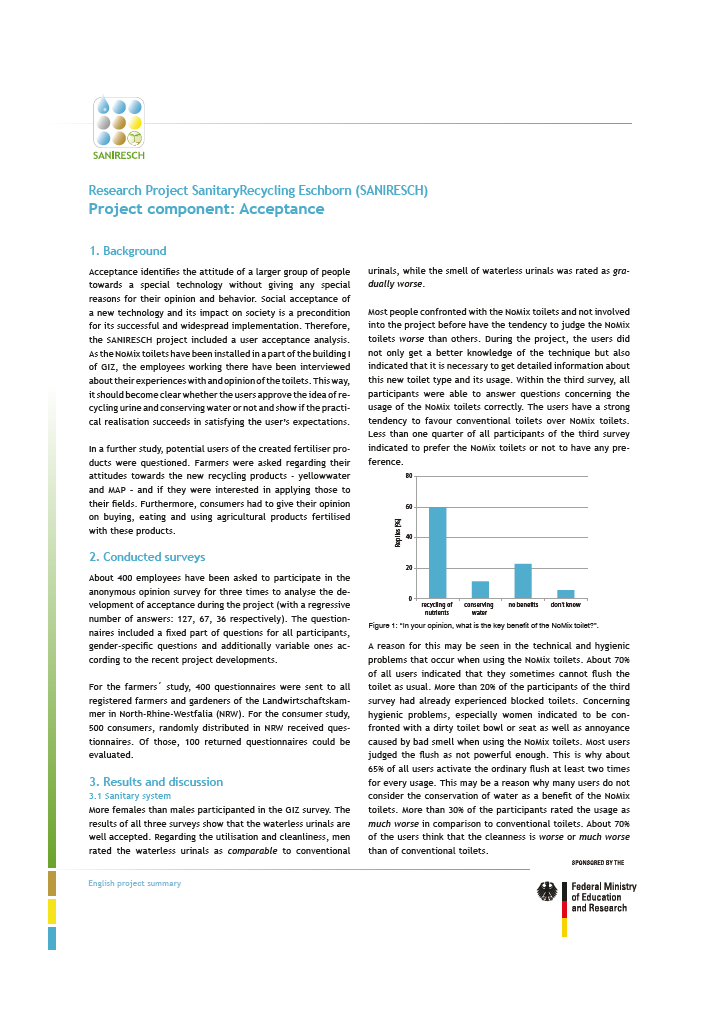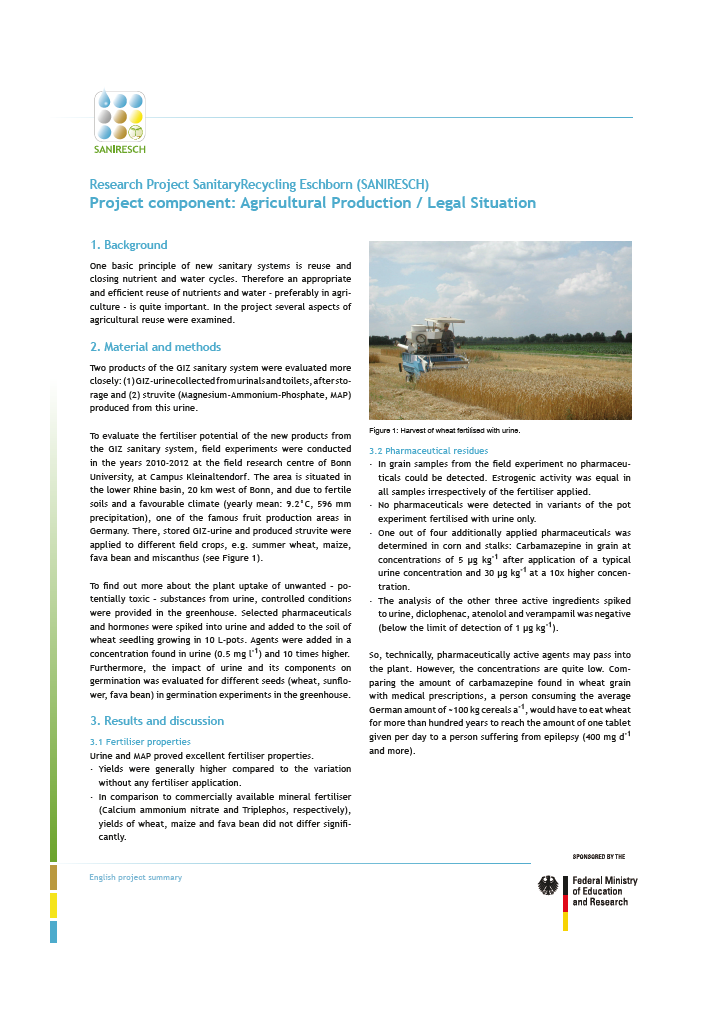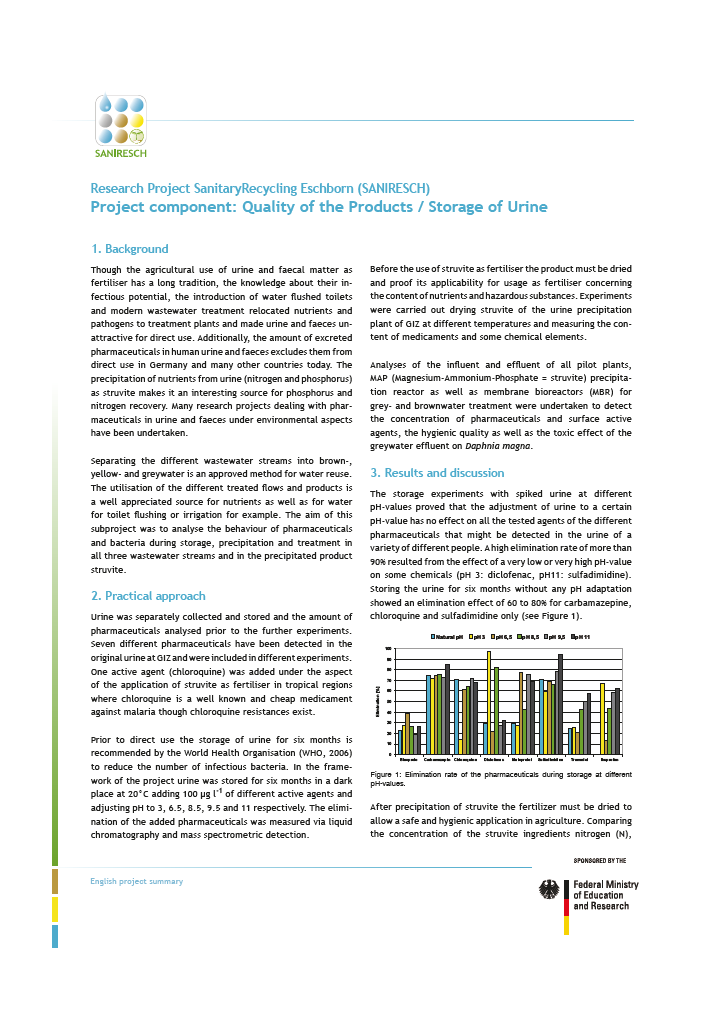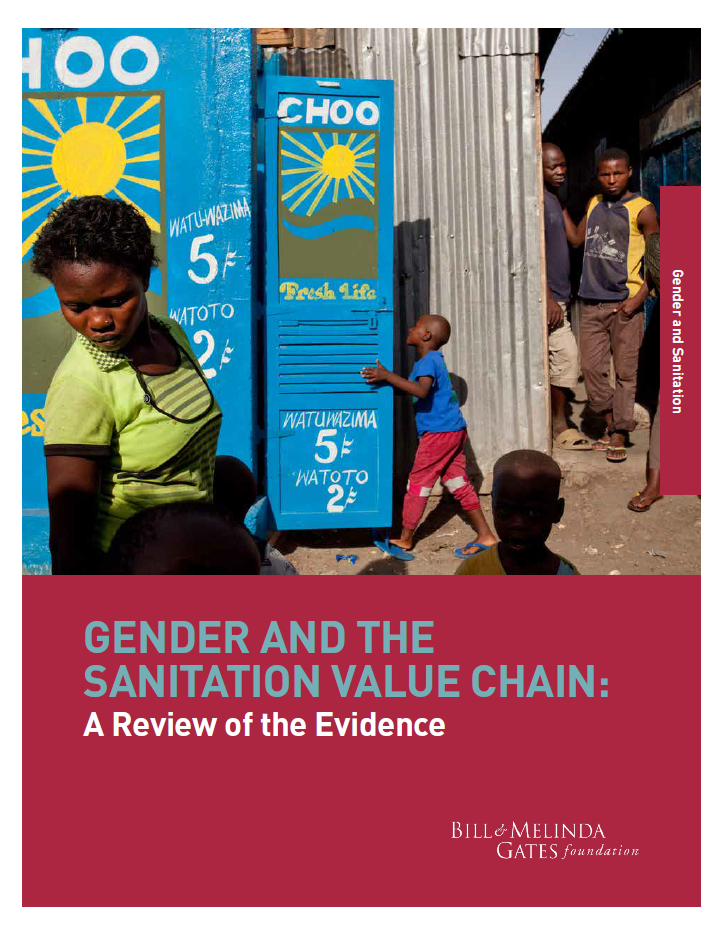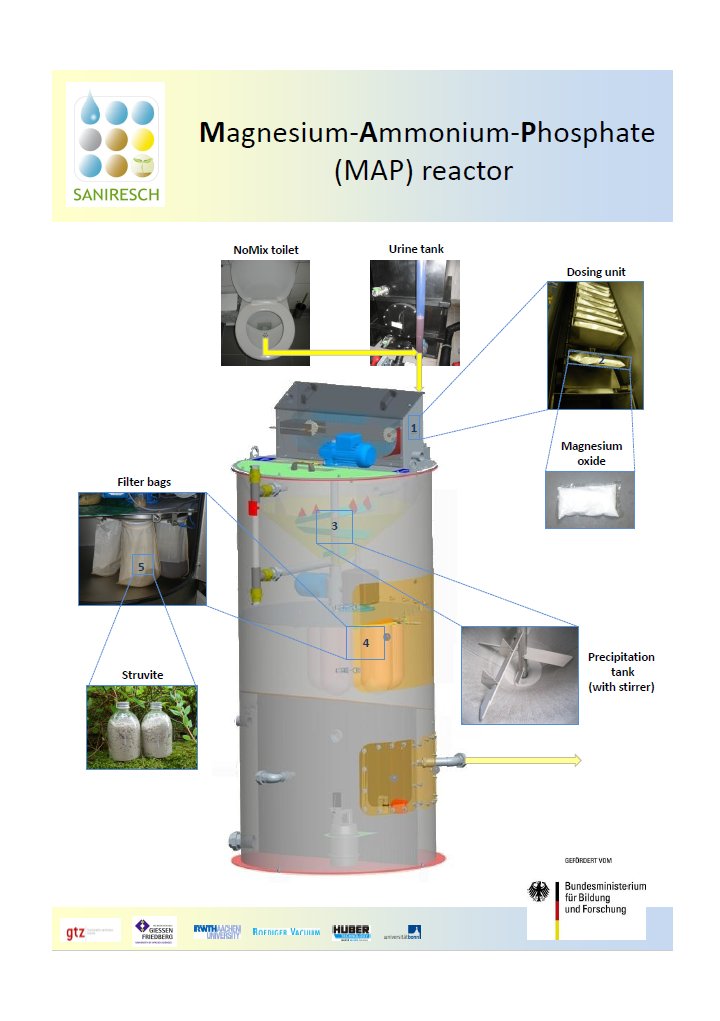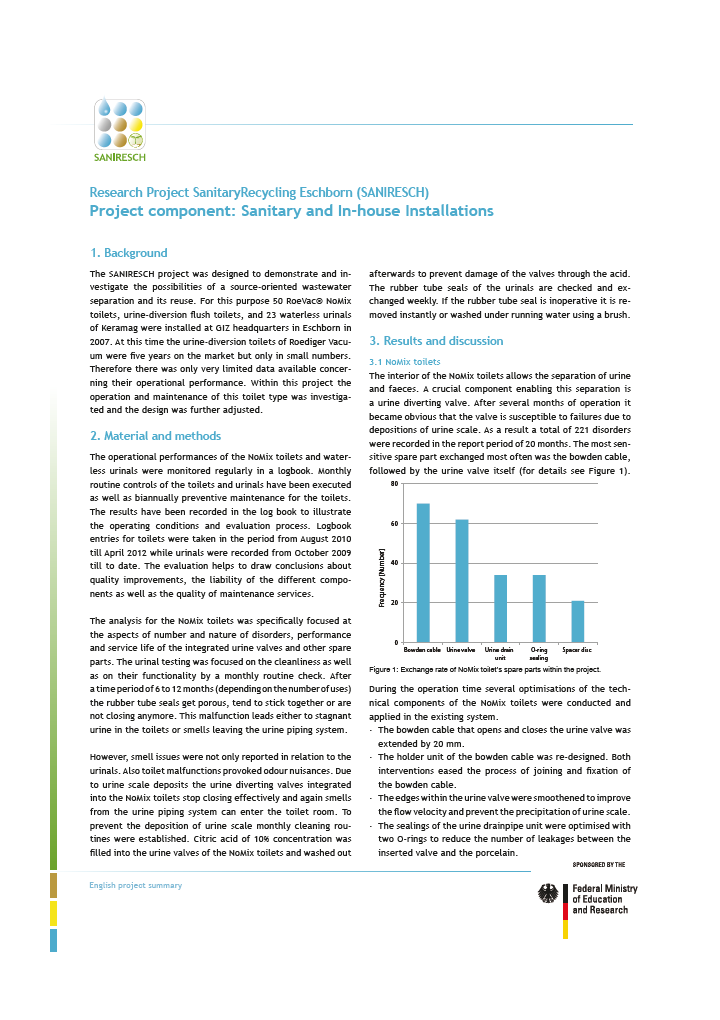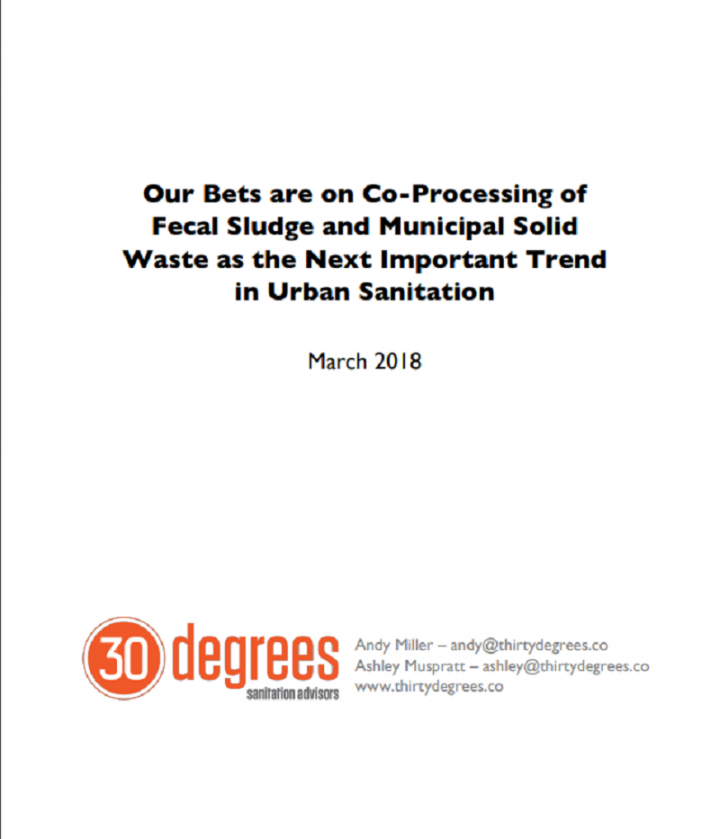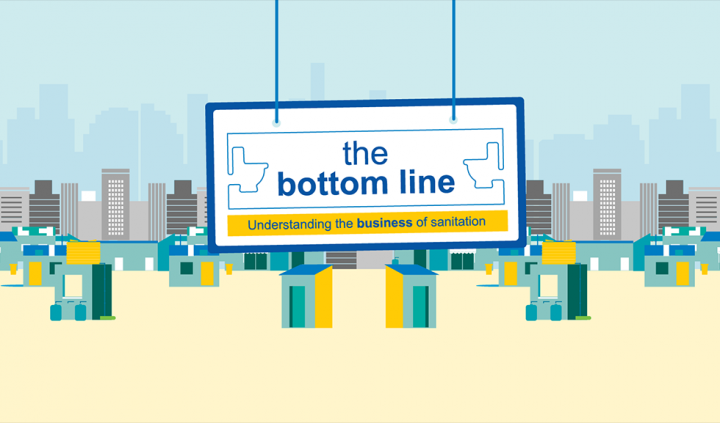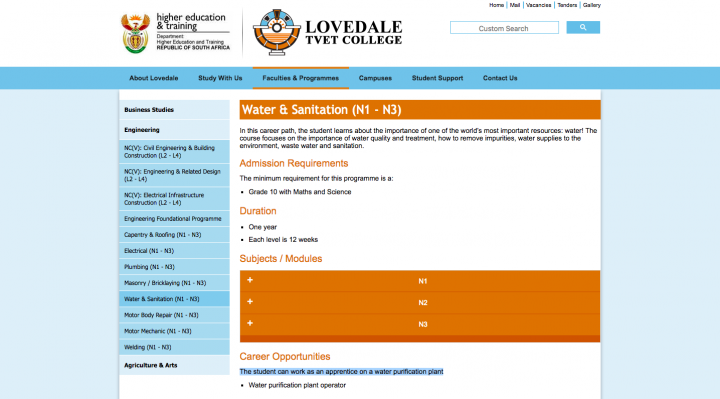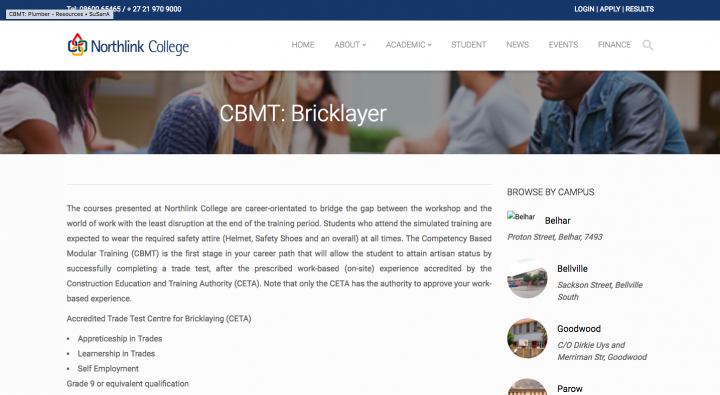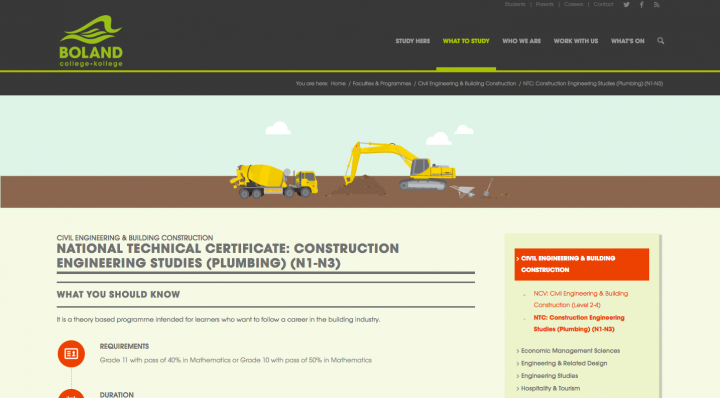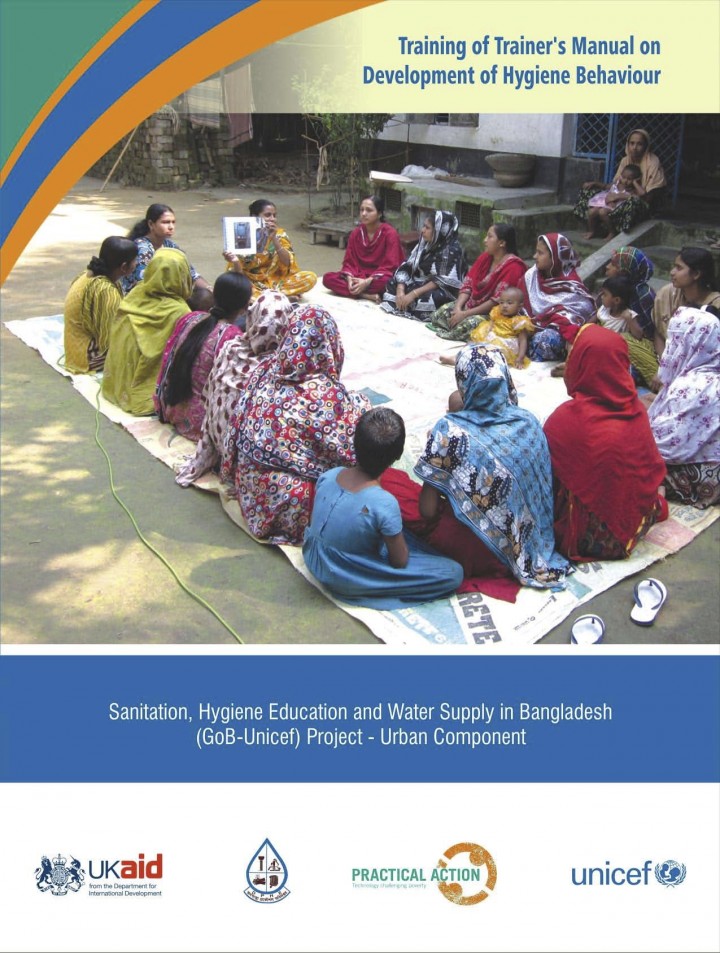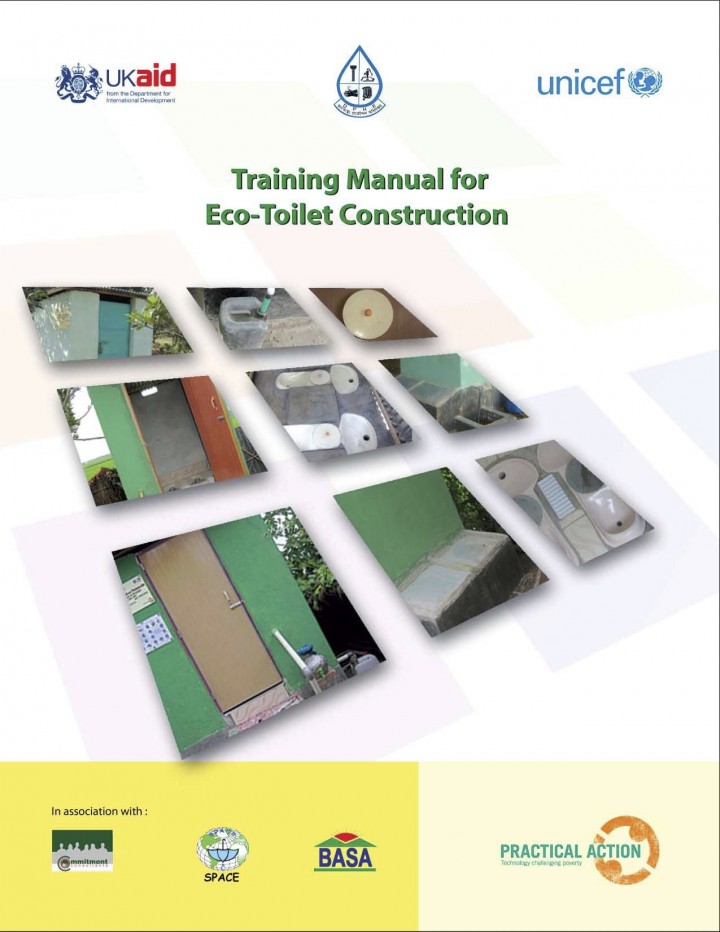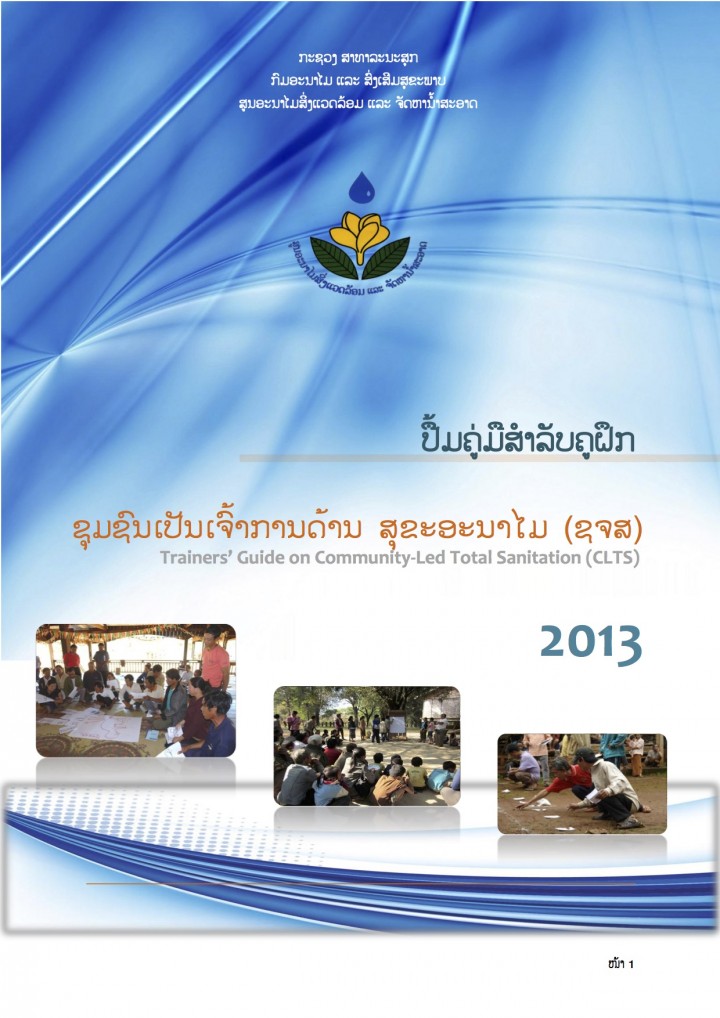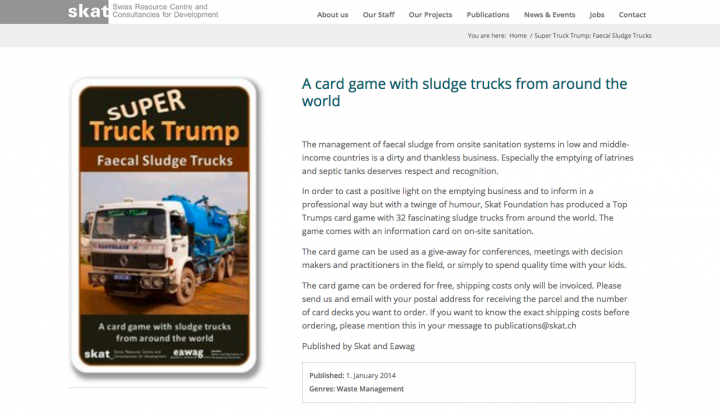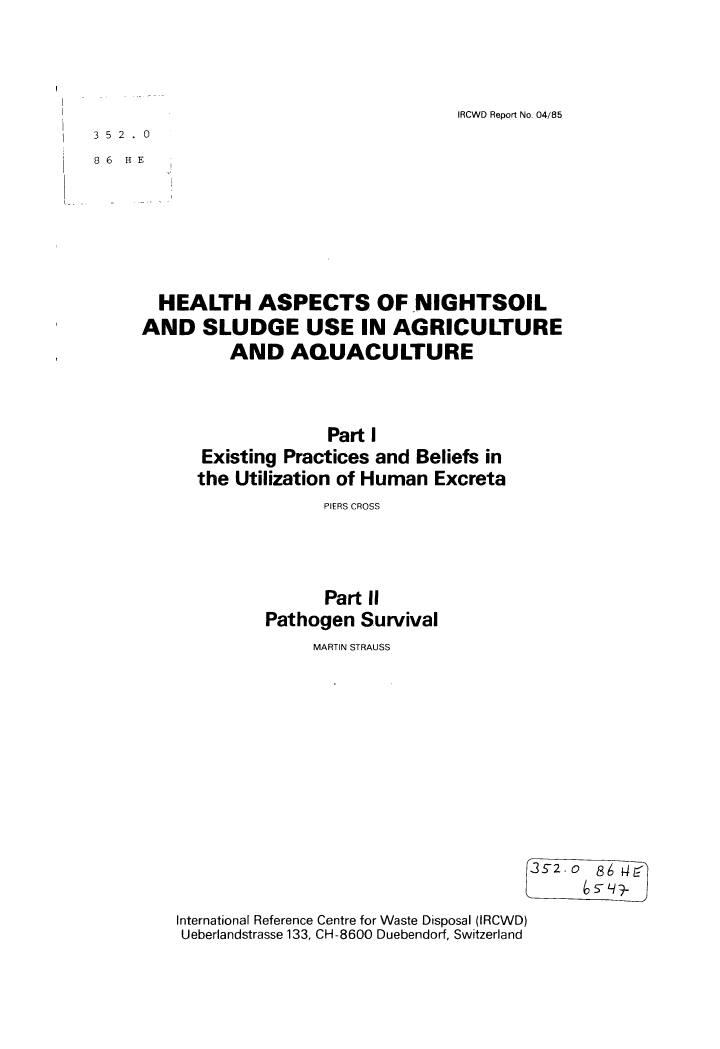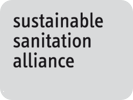Various Authors (2012) Acceptance of the innovative sanitation system and the utilisation of human urine within SANIRESCH Project
The acceptance of the innovative sanitation system and the utilisation of human urine was investigated within the SANIRSCH-project. In conjunction with the agricultural production / legal situation component farmers were asked if they would be willing to fertilise their agricultural crops with human urine. In a second study consumers were asked if they would find products fertilised with urine acceptable. Final results were expected in […]
Various Authors (2012) Agricultural production / Legal situation within SANIRESCH Project
This component dealt with the agricultural use of urine and MAP (struvite) as fertiliser as well as the related legal aspects. The component was led by the University of Bonn. Here you can find the results of the project component "Agricultural production / Legal situation" that has been presented at the DWA conference "NASS-Tage" and the factsheet gives you a short overview about the main informations […]
Various Authors (2012) Quality of the products / Storage of urine within SANIRESCH Project
A central aim of the measures for nutrient recovery from wastewater streams is to guarantee the best possible separation between valuable substances and pollutants. It is necessary to ensure a high-quality application of the nutrients. The pollutant concentrations in the recycled products are ideally not higher than the range of the concentrations in mineral fertilisers. This aspect will be assessed within the project component “quality […]
Various Authors (2010) Operation and monitoring within SANIRESCH Project
The measures regarding operation consisted of the steering, control and monitoring of the treatment plants by remote monitoring; the elimination of disturbances and breakdowns; regular inspection and maintenance; refilling of consumables. Furthermore, the relevant basic parameters were analysed in urine, brownwater and greywater to gain further information on the characteristics of the wastewater streams. Until now, only little information was available on the composition of […]
Various Authors (2018) Gender and the sanitation value chain: A review and case studies (webinar and report)
The gender and sanitation value chain report is the first in a series of evidence reviews commissioned by the Bill & Melinda Gates Foundation to highlight how gender influences development outcomes across sectors. This report seeks to uncover the evidence on gender differences in the sanitation value chain to show why gender matters across this sector. It includes an assessment of gender differences in sanitation […]
Various Authors (2010) Plant technology within SANIRESCH Project
The lead of this component was HUBER SE. The treatment lants were deinstalled at the end of the project in December 2012. Pictures of the deinstallation are available at the SuSanA Flickr album.
Various Authors (2010) Sanitary and in-house installations within SANIRESCH Project
In the main building of the GIZ headquaters located in Eschborn, 23 waterless urinals of Keramag and 38 RoeVac© NoMix toilets have been installed for the source separation of the wastewater streams. Within this project component, the RoeVac© NoMix toilets are tested in a continuous-operation mode and necessary modifications are made. In the course of the project several modifications of the technical components of the RoeVac© NoMix […]
Miller,A., Muspratt,A. (2018) Our bets are on co-processing of fecal sludge and municipal solid waste as the next important trend in urban sanitation
Liquid and solid waste management are huge and unsolved challenges in many developing cities. This article makes the case that co-processing FS and MSW could help: 1) Tackle the public and environmental health disasters associated with inadequate urban waste management; and 2) Improve the operating economics of FS management.
WSUP (2017) The Bottom Line
In the fictional African city of Bafini, 80% of residents have no access to a sewer connection, relying instead on toilets with pits or septic tanks. This creates a need for better faecal waste collection services, and a market opportunity for a smart entrepreneur. You run a waste management business in Bafini, and have just decided to expand into faecal sludge management. You have a positive […]
Loveland TVET College (2018) Water & Sanitation (N1-N3)
The mission of Loveland TVET College is to produce high quality products and have a visible impact on social and economic development by: - offering programmes of international standard, through the formation of strong linkages with key stakeholders and focusing on the holistic development of learners; and - being a well-capacitated, accessible, credible, and self-sustaining TVET College, with flexible and dynamic programmes which are responsive to the […]
Northlink College (2018) CBMT: Bricklayer
The courses presented at Northlink College are career-orientated to bridge the gap between the workshop and the world of work with the least disruption at the end of the training period. Students who attend the simulated training are expected to wear the required safety attire (Helmet, Safety Shoes and an overall) at all times. The Competency Based Modular Training (CBMT) is the first stage in […]
Northlink College (2018) CBMT: Plumber
The courses presented at Northlink College are career-orientated to bridge the gap between the workshop and the world of work with the least disruption at the end of the training period. Students who attend the simulated training are expected to wear the required safety attire (Helmet, Safety Shoes and an overall) at all times. The Competency Based Modular Training (CBMT) is the first stage in […]
Bolland College (2018) Civil Engineering & Building Construction National Technical Certificate: Construction Engineering Studies (Plumbing) (N1-N3)
It is a theory based programme intended for learners who want to follow a career in the building industry.
CTEVT (2016) Curriculum - Technical School Leaving Certificate Water Supply and Sanitary Engineering (18 months program)
Nepal Government, Ministry of Education implemented the Letter grading system in SLC.The door of TSLC program is open for those who have appeared 10th grade exam and achieved any GPA and any grade in any subject. Focusing on such students the curriculum of TSLC of 29 months and 15 months has been converted into 18 months. This is the competency based and market oriented curriculum guide […]
Practical Action Bangladesh (2011) Training of Trainers Manual on Development of Hygiene Behaviour
Primarily the modules and instruction manuals will help to facilitate in training up the CHPs and conducting hygiene sessions in the communities.
Abdullah Al Mamun, S. A., Basak, R. (2011) Training Manual for Eco-Toilet Construction
This construction manual has been developed to assist different sector of people, especially for the Sub-Assistant Engineers and local masons, who are associated with the construction of Eco-toilet. This manual should not be used as a complete or final reference document. However, it should be used for the purpose of extension of technical knowledge and ideas of the associated persons of this technology, through improved […]
WSP (2013) Trainers' Guide on Community-Led Total Sanitation (CLTS) (Lao)
Trainers' Guide on Community-Led Total Sanitation (CLTS) in Lao
Deal, R., Watasa, S. (2010) Sanitation Marketing Programme: Masons Training Manual
The manual is intended for use by trainers and training institutions with limited access to formal training facilities and limited experience with advanced training methods. The trainees should have prior experience working in concrete construction and preferably be practicing masons. The manual imparts the most relevant and appropriate skills to masons to enable them to respond to consumer demand for low-cost latrine technologies. The manual is […]
Skat (2014) Super Truck Trump Faecal Sludge Trucks
In order to cast a positive light on the emptying business and to inform in a professional way but with a twinge of humour, Skat Foundation has produced a Top Trumps card game with 32 fascinating sludge trucks from around the world. The game comes with an information card on on-site sanitation. The card game can be used as a give-away for conferences, meetings with decision […]
Cross, P., Strauss, M. (1985) Health Aspects of Nightsoil and Sludge Use in Agriculture and Aquaculture
Excreta constitute a valuable source of nutrients. In many countries (e.g. China, Taiwan, Japan, Korea, Indonesia) they are traditionally and widely used to fertilize fields and ponds where fish and aquatic vegetables are grown. In these areas, faecal wastes carry considerable economic importance. This may increase in the years to come elsewhere too as a result of the growing cost of mineral fertilizers (unaffordable to […]
